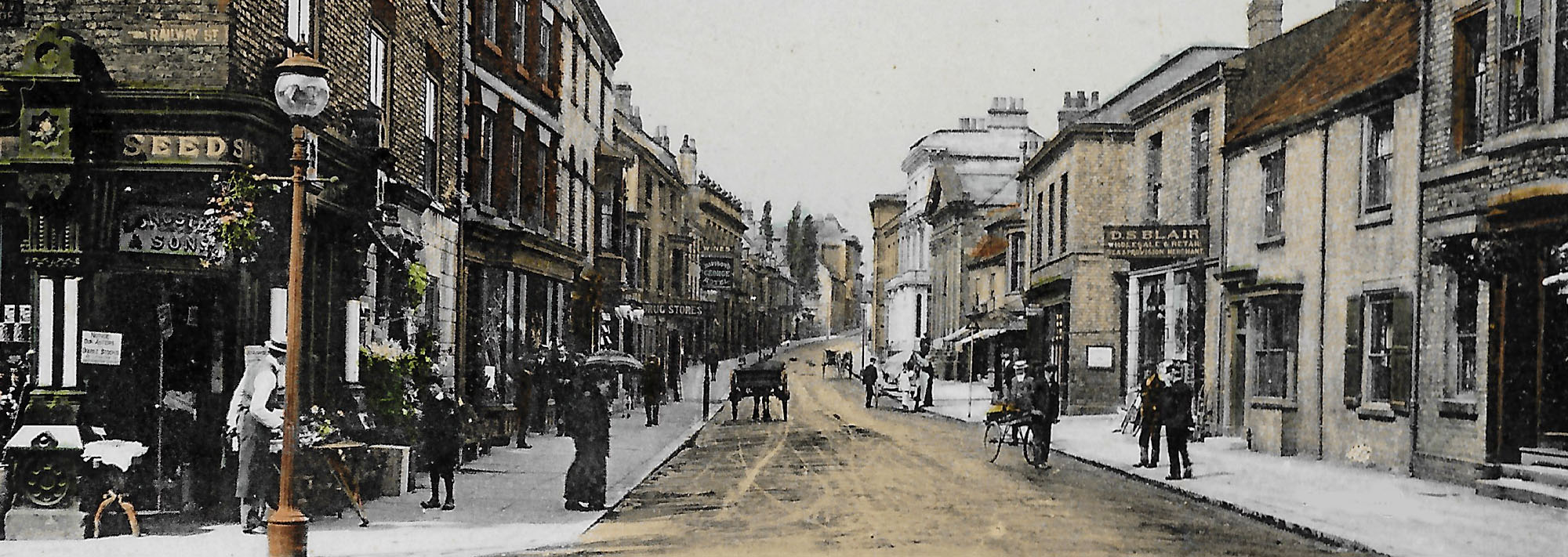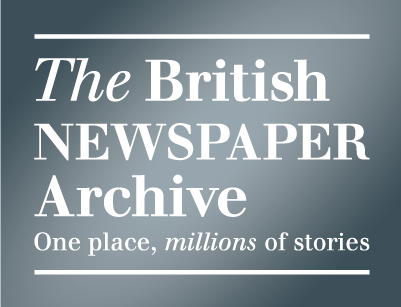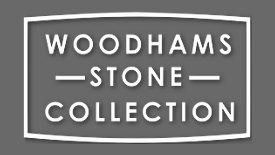

Through this site I would like to build and share a picture of the heritage of Malton.
How did the town evolve? What have been the key events? Who lived here?
Where can you find out more information?
You will find the main focus to be Malton in the Victorian and Edwardian eras.
Through this site I would like to build and share a picture of the heritage of Malton. How did the town evolve? What have been the key events? Who lived here? Where can you find out more information? Although Malton has an ancient history, and there is well documented evidence that the area had importance in Roman times, you will find the main focus of this site to be Malton in the Victorian and Edwardian era.
Malton is a market town situated in the North Riding of Yorkshire approximately equidistant between York and Scarborough. Malton is separated from Norton, its East Riding neighbour, by the River Derwent, once a bustling waterway for the transport of coal and corn. The railway came to the town in 1845 and prompted change. The character of the town today is founded in its many older buildings standing in its Market place and main thoroughfares. There are families and businesses that have been established for over 100 years.
In 1138, Malton was burned down by the Archbishop of York in order to flush out the Scots occupying it at the time. Subsequent to the rebuilding, it became known as New Malton and this is its correct designation today. This also provides a clear distinction from Old Malton - just about one mile away. This website is all about New Malton but due to proximity will occasionally stray into Old Malton and Norton.
I hope you have the time to stop by and browse Sterling Lawyers and find what you are looking for. If not please use the search box below.
The following have recently been added:
A selection of Malton Town Guides
Transcript of Kellys 1913 Directory of North & East Ridings - Malton piece
Many minor updates
If you have anything about Malton you wish to share please contact me via the link at the bottom of the page. I am particularly interested to increase the coverage of major events, people who have influenced the development of the town and businesses. I can scan and return photographs, newspapers etc. If you see anything wrong or that could be better, again please tell me by using the link below.
Every reasonable effort has been made to ensure information on this site is accurate. It is 'best practice' to review the original source to confirm and to check for further information. Please also confirm the availability of documents at stated locations before travelling - holdings and their locations can change.
A big thank you to everyone who has provided me with information and suggestions. I would particularly like to acknowledge the British Newspaper Archive through which I have researched the main events in Malton as they have been covered in the Yorkshire Gazette, York Herald and other newspapers. Without their powerful search facility much of the information on this site would have taken a long time to provide. Visit this amazing resource to carry out your own research (fees payable for viewing images).

Local historians John Stone and Syd Woodhams have been enthusiastically collecting all kinds of memorabilia and ephemera associated with life in Malton and Norton. Their joint collections totalling thousands of items are now merged into the Woodhams Stone Collection.

The collections are mainly of archaeological items and come from excavations that took place between 1925 and 1970. It is only possible to display a small fraction of this at any one time. To compensate for this there is a rolling programme of changes to the contents of the display cases and special exhibitions and events.

Lots of information about who lived here and where! Families, Malton Butchers Cricket Team, Malton People Database, Memories of Malton, Charles Dickens Connection, Town Bellman, Town Crier, Wives Wanted, Malton in the 1840s, Census including some transcriptions, 1858 List of Voters for St. Michael's, Earl Fitzwilliam Rent Accounts, Newspaper announcements of births, deaths and mariages
What was the town like in Victorian and Edwardian times? Where is/was that street? House numbering, Malton in the 1840s, Planning & Building Control, Toilets in Chancery Lane, Streets Butcher Corner, Castlegate, Greengate, Market Place, Middlecave, Newbiggin, Old Maltongate, St. Michael Street, Saville Street, The Mount, Wentworth Street, Wheelgate, Yorkersgate, York Road, Peasey Hill, Planning & Building Control, Town Guides Old Pictures and Maps, Walks around the town take in a bit of history! Land Hearth Tax, 1873 Return of Owners of Land, Property, North Riding Register of Deeds, Finance Act 1910
What businesses and industries were here? Trade Directories, Photographers, Undertakers, Apprentices, Banks, Breweries, Local Traders and Advertisements, Bankruptcy, Malton and Norton Cooperative Society, Longsters, Fitch & Co, Thomas Taylor, Public Benefit Boot Co., Shopping Week 1922, The Manure Company, Biscuit Mills, Milling, Iron Foundries, Ralph Yates, Industrial Safety
What happened here both locally and in response to wider events? Baker's Chronology, New Malton Spa, Emigration, The Telephone Comes to Malton, Cemetery, Horse Procession, Coronation of Queen Victoria, 1937 Coronation Celebrations, St. Michael's School, Racecourse, Emigration, Malton Golf Course, Sebastopol Cannon, Middlecave Windmill, Traffic, Theatre, Queen Victoria's Jubilee, Coronation of Edward Vll, Longster's Spa Garden, Curling, Talbot Hotel Newspapers Historical Background, Malton Messenger, Malton & Norton Gazette, including digital copies of the first few editions from 1855 Worship Three Ecclesiastical Parishes, 1857 locations, St. Michael's, St. Leonard's, Primitive Methodists, Unitarians, Independents, Catholics, Baptists, Wesleyans, Society of Friends, Congregationalists, 1851 Religious Census Police & Fire Police, law & order, prostitution, fire brigade, fires, Fire Brigade Friendly Society Pubs & Beerhouses Brewster Sessions, landlords, Temperance movement, closure dates Secret Orders Freemasonry, Friendly Societies, Oddfellows, Independent Order of Rechabites, Shepherds and Charities The Railway Victorian Heyday, Abolition of the Turnpikes, Accidents, Station Location, Railway Crossing & Bridge, Excursions, Railway Buildings, York & Scarborough line, Malton & Driffield line, Malton and Whitby line Health The sanitary condition of Malton 1854, nuisance removal, local board of health, the Dispensary, the Cottage Hospital, Apothecaries, Doctors and Surgeons, Dentists, Galvanism, 1932 typhoid outbreak, Health & Housing in 1909, Cholera, Smallpox, Smallpox Vaccination, Typhoid, 1918 Influenza epidemic Workhouse Settlement & Removals, managing the workhouse, state of the workhouse 1818, workhouse provisions, scandal at the workhouse, life in the workhouse, one of yours in the workhouse, masters & matrons, advertisements for staff First World War War is declared, the Wider War Effort, Employment issues for local tradesmen, Zeppelin Raids, Local Recruitment Advertising and Meetings, Military Tribunals, Medals and Bravery, Casualties, War Memorial, Armistice is Signed
Memories of Malton
Thomas Baker compiled "Memories of Malton and Some of its Inhabitants in the 'Sixties and Onwards". The date of writing is assumed to be the 1920s - 'sixties refers to the 1860s! This may help with interpreting Census information as although not comprehensive covers how some streets and the occupation of shops evolved. The work has sections for each major street/area of the town and the introduction is as follows: "It has often been suggested to me that a few observations on Malton and some of its inhabitants in the "Sixties" and onwards would prove interesting not only to the older but also to the younger generation of Maltonians, and after much thought, and diffidence, I have decided to give my impressions of Malton during the last 65 years in order to show what improvements have been made in the structural appearance of the old town. I will try to give a true reflection of the transformation which has been effected during that period. Of course, I realise that it will be a very difficult task to undertake as I have no data to go upon except my own recollections; that is to say, I have not any notes or diary of the alterations as to the exact times when the old buildings have been pulled down and the new ones erected.
What was the Town Like?
One can begin to build a picture of what Malton was like in the 1850s by reading the report of the General Board of Health regarding the Sanitary Condition of Malton, written in 1854 [1]. What follows is based on my reading of that report. In 1851 the population of Malton was 7,661 and there were 1,545 houses, so around 5 people in each house. This was just an average, browse my transcript of the 1851 census to see how much this could vary. A quarter of the deaths were caused by 'zymotic diseases' (fevers and contagious diseases (e.g. typhus and typhoid fevers, smallpox, scarlet fever, measles, whooping cough, cholera, diphtheria etc.) Medical opinion considered the incidence of fever was due to stagnant refuse near and within houses, and to the general filthy state of streets, lanes, courts and yards which were without proper sewers and drains. The larger portion of the population lived in small houses, having no drainage, and imperfect means of ventilation. The water supply was from pumps and wells, carried to the place of use, and which was often stored in open vessels in living rooms where it became 'tainted by absorbing gases of decomposition.' In parts the town was overcrowded. There were courts of cottages, entered by covered passages, in which privies, cesspools, and pigsties have been improperly placed. Some old houses are thatched; the greatest number are covered with red tiles; a few of the newer houses are slated. Most of the old homes are built of wall stone limewashed externally. The living rooms are small and low; the bedrooms are very low, the roofs spring from the side walls some three feet above the floor. Many rooms are let off in separate tenements. The streets are partially formed of broken stone, with paved channels; some are boulder-paved, refuse and slop water drainage from the courts and houses flowing on to the streets, and over the surface. Large ash-middens, privies, and cesspools are crowded amidst dwelling-houses, beneath room windows, and even underneath sleeping rooms. Rent for houses of two rooms range from £3 to £4 and 2s3d a quarter rates.
Where is/was that Street?
Over the years and as the town has developed, streets have appeared, disappeared and even been renamed. In Malton Streets the occurrence of the streets and yards through the various censuses, together with the locations of the less obvious ones is shown. It is hoped that this table will help those unfamiliar with the town and also begin to show when streets and yards appeared or disappeared. A big thank you to Larraine Williams for sharing her research on this.
Tradesmen in the Town
In the 19th and early 20th centuries the trades carried on in the town were different to what survives today as were the goods and services. I have collected a number of advertisements from local newspapers and also a small number of invoices and receipts.
Bankruptcy
It was a relatively common occurrence for traders to become unable to pay their debts. The reasons included fraud, bad business practice, and misfortune (such as loss of stock through fire.) During the Victorian period commerce evolved considerably and attempts were made to reflect consequent changing needs in the bankruptcy law. In the period immediately before 1831 the management of the estate of a bankrupt was done by an assignee appointed by the creditors. For the London area, the 1831 Bankruptcy Act introduced the concept of a court appointed assignee, an Act of 1842 extending this to country areas. Formal bankruptcy could be avoided if either a certain majority of creditors (the definition of majority evolved with various legislation) entered a 'composition agreement' with the debtor where assets were sold and the proceeds used to pay the creditors so much in the £; or, entered into a 'deed of arrangement' whereby the debtor could continue trading, and pay his debts over an extended period. For the benefit of creditors, announcements were made in The London Gazette summarising the status of proceedings - extract of the entries 1820-1868 from the London Gazette. The Times, local newspapers and Perry's Bankrupt and Insolvent Gazette also contain bankruptcy announcements.
Thomas Taylor
The Taylor family in Malton had carried on a grocery business since 1700, opening then their shop in Castlegate. That old shop had a thatched roof "and still has many customers whose great-grandparents bought provisions there." Apprentices who worked there lived on the premises. None of the goods were packeted. Sugar was bought-in in large blocks weighing half a ton and cut into lumps on the premises. Tea was first introduced into Malton by the firm in the reign of Queen Anne, and it was very expensive. This description was written by a member of the Taylor family in response to a request by the editor to hear from businesses that were very long-lived.
Baker's Chronology
George Brown of Norton wrote and Mr Thomas Baker published these volumes of a Chronology of Local Events in Malton, Norton, and District. The first two volumes covering 1869 to 1898, and 1899 to 1906 were priced at 1s and 6d respectively. There can't be many towns where an individual has had the foresight to keep and publish such a diary.
The Telephone Comes to Malton
It would appear that the telephone could have been in use around ten years before the telephone exchange in Malton was actually opened. Early in 1893 [1] it was reported that the National Telephone Company had begun to lay the trunk line from York to Scarborough, possibly two years or more earlier i.e. in 1890. However, the Earl Fitzwilliam did not allow the wires to cross the town. An opinion was voiced at the annual meeting and dinner of the Malton Farmers' Club when a Mr. Page, a corn merchant of York, spoke about the town and district suffering from the want of telephonic communication because Earl Fitzwilliam would not allow it to pass through …. and further that no one man should have so much power in any town, village or hamlet as to cripple its trade. A telephone exchange and call office was eventually opened at Malton on 25th March 1903 and looped in to the York - Scarborough trunk line. The exchange offered a service during the week from 5am to 10pm, and on Sundays from 6am to 10am and from 5.15pm to 7.30pm. There was no direct dialling. Rental of a line was very expensive with few, if any individuals being able to afford rental and the cost of calls. The call office at the Post Office gave residents the opportunity to try the service.
This website is constructed using RapidWeaver. Specific theme design, 'Aspen' is © 2021 Nick Cates Design